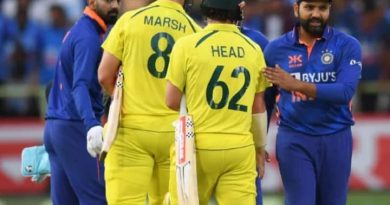India Records Highest Percentage In World Anti-Doping Agency’s Offenders’ List | Other Sports News
India registered the highest percentage of failed dope tests among countries which tested more than 2000 samples with South Africa being second in the 2022 Testing Figures Report released by the World Anti-Doping Agency. India tested 3865 samples (urine, and blood combined) during the recorded period, of which 125 returned adverse analytical findings. This amounts to 3.2 per cent of the samples, the WADA said in its report released late on Wednesday.
In terms of number of samples tested, India was 11th on the list but the number of doping violations were higher than major sporting nations like Russia (85), USA (84), Italy (73) and France (72).
South Africa returned the next highest percentage of adverse findings — 2.9 per cent from 2033 tested samples.
The third place was taken by Kazakhstan with 1.9 per cent of its testing pool of 2174 samples returning adverse findings.
The fourth highest percentage came from Norway and the USA. While the USA tested 6782 samples, Norway’s count was 2075.
China tested the highest number of samples — 19,228 — during the period with an adverse findings percentage of 0.2 per cent.
Germany tested 13,653 samples of which 0.3 per cent tested positive for banned substances.
Russia, which has been suspended by the International Olympic Committee for repeated doping violations, tested 10,186 samples with adverse analytical finding percentage of 0.8 per cent.
“WADA’s Annual Testing Figures Report is the most comprehensive overview of all doping control samples…,” WADA Director General Olivier Niggli said in a statement.
“WADA is pleased to note that the number of anti-doping tests in the testing figures continue to increase across the board and are the closest to the pre-pandemic levels (2019).
“The Testing Figures Report is an important tool for collaboration between Anti-Doping Organisations,” he added.
(This story has not been edited by NDTV staff and is auto-generated from a syndicated feed.)
Topics mentioned in this article





